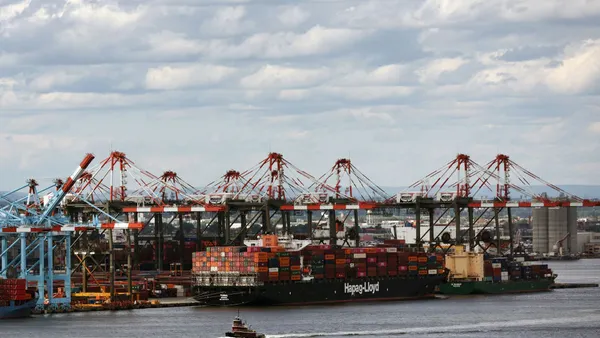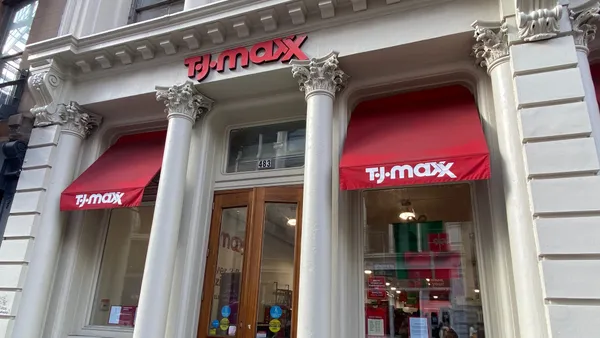Dive Brief:
- The loaded import volume at the Port of Los Angeles declined 6.8% year over year (YoY) in June, and loaded exports fell more than 21%, according to numbers released by the port Wednesday. Loaded imports at the Port of Long Beach declined more than 9% YoY in June, and exports fell 12%.
- The Port of Los Angeles has begun to see retailers restocking omnichannel inventory and canceled sailings are beginning to slow, Executive Director Gene Seroka said Wednesday during a press event.
- The movement of empty containers was down 22% in the first six months of the year compared to the same period in 2019. But the movement of empty containers was down just 7% YoY in June, "meaning we're starting to see the evacuation of empties to prepare for a modest uptick in imports in the months to come," Seroka said.
Dive Insight:
The Port of Los Angeles expects to move 7.9 million TEUs in 2020, an 18% decline in volume compared to 2019, according to a forecast presented Wednesday by Seroka.
"Now the double hit of the pandemic and the trade policy is in clear focus, with levels of cargo volume not seen since the Great Recession," Seroka said.
Another forecast released earlier this month by the National Retail Federation (NRF) and Hackett Associates suggests the nation's ports will have the lowest peak season volume since 2014.
When the port experienced volume decline during the Great Recession, it took nearly a decade to see levels recover. But the port is confident it won't take that long this time around. Seroka said he had a nine-point plan for recovering volume, but didn't outline the points.
In a press event last month, Seroka said the port had "plans at the strategic and tactical level for cargo and customer acquisition."
"We have plenty of room on our terminal tarmacs to grow when the American economy is ready to slowly reemerge," he said Wednesday while showing drone footage of the port facilities. He pointed to lower turn times and successful movement of empties to highlight that cargo was moving smoothly through the port.
As companies begin to diversify sourcing outside of China, due to ongoing trade war tariffs and the pandemic's impact, some research suggests ports on the East Coast and Gulf Coast are best positioned to take advantage of volume coming from the new locations. Even with the shift, the East Coast ports would still be much smaller than their West Coast peers, according to a report by CBRE.
Seroka acknowledged this reality in Wednesday's press briefing, saying the port could permanently lose 15% of its market share due to the Trump administration's trade policy. Seroka said the export market has the most potential for growth at the port, and it would work to reduce costs to make the facility "a more attractive trade gateway for the logistics decision-makers."














